#kennedy center honoree
Photo

#1960s#harry belafonte#activist#civil rights#jamaica farewell#the banana boat song#jump in the line#king of calypso#triple crown of acting#emmy grammy and tony winner#kennedy center honoree#smile#rest in peace#r.i.p.
10 notes
·
View notes
Text

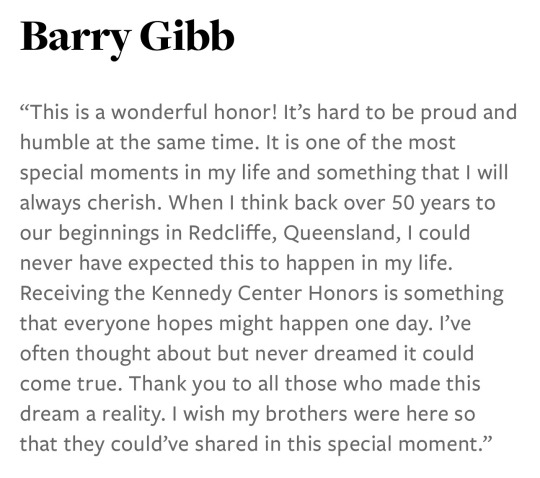
https://www.kennedy-center.org/whats-on/honors/
Today is an incredible day because our Barry Gibb is a Kennedy Center Honoree!! The big shindig takes place in December and airs on CBS. I couldn’t be any happier than I am right now! I was watching when the announcement was made and started yelling and then crying. This man deserves ALL the accolades and recognition. I’m so happy!! 😭😭😭
#barry gibb#bee gees#the bee gees#kennedy center#honoree!#he deserves the universe#I’m still in tears of happiness
19 notes
·
View notes
Text
I feel like there are so many big awards/achievements Taylor will eventually be honored with in her career.
#taylor swift#like I see her getting her EGOT at some point#I see her getting inducted into the rock and roll hall of fame probably as a performer first though she’d probably prefer songwriting first#but I think she’d get inducted on both counts eventually#I wouldn’t be surprised if she was a Kennedy center honoree eventually too#she’s just entering into the film world so who knows what she might achieve be honored with there#I also see her probably getting a fourth aoty award too#and I’m curious at what point it will be in her career if/when she gets the video vanguard award
7 notes
·
View notes
Text
The 2023 Kennedy Center Honorees were announced this morning and Dionne Warwick will be one of the five awarded later this year.

Created in 1978 and hosted annually in Washington, D.C. the honors have been given, so far, to less than 300 recipients.
Recommendations are submitted by the general public and then filtered through the community of artists and a board of trustees.
The first criteria, according to the official website, is excellence.

Recipients do not have to be American but must be performing artists in film, television, music, theater, opera, and/or dance whose work has contributed significantly to American culture.
It is possible for the public to attend the ceremony in December, but be aware Kennedy Center donors get first pick and others have to request by email. (Definitely ask early if you want a chance to get in!)
CBS, and this year Paramount+, will broadcast the event. Until then, you can check out Dionne's honors page.
#dionne warwick#the kennedy center#kennedy center honors#the kennedy center honors#2023 kennedy center honors#2023 kennedy center honorees#billy crystal#queen latifah#renee fleming#barry gibb#cbs#paramount+
0 notes
Text

1983 Kennedy Center honorees: actor James Stewart, ballet dancer Katherine Dunham, (L-R) standing: director Elia Kazan, composer Virgil Thomson, and entertainer Frank Sinatra. #DailyStewart
18 notes
·
View notes
Text
Queen Latifah 👑
queenlatifah:
Loved sharing this amazing experience with my family, friends, and fellow honorees, thank you @kennedycenter 💕🎉🙏🏽
@jasonrembert
@hairbyiasia
@iamharrisoncrite
@brittywhitfield
@tonywardcouture
@pamellaroland
#KevinWolf/AP
#NathanHoward/Reuters
#MaryKouw/CBS
The 46th Annual Kennedy Center Honors @cbstv
30 notes
·
View notes
Text
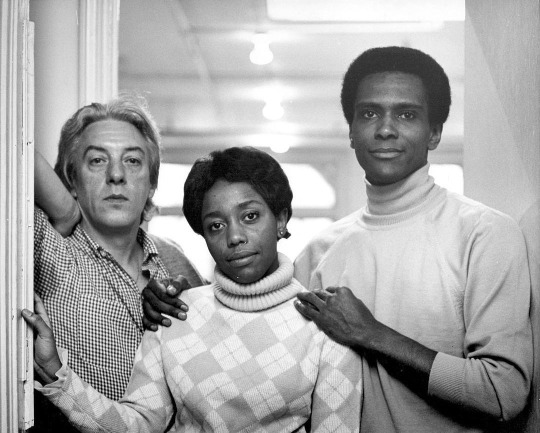
Today We Honor Tania León
Afro Latina Tania León is a Cuban born American Pulitzer Prize Composer and Conductor, who won the award in 2021 for ‘Stride,’ her orchestral work inspired by Susan B. Anthony’s activism.
León is an educator at the City University of New York and the founding Composer of Composer Now, a nonprofit organization dedicated to supporting and celebrating living composers.
“The beat must go on. Specifically, the one toward the end of the last section.”That’s composer Tania León’s only note for the New York Philharmonic at a recent rehearsal in freshly finished David Geffen Hall.
The Kennedy Center honoree has been an unstoppable force in expanding the possibilities of what American “classical” music can — and ought to — sound like.
Since arriving in the United States from Cuba as a 24-year-old refugee, León, has become one of the most essential voices in American classical music. Over her prolific 50-year career, León has composed orchestral, chamber and choral works, and operas and ballets — music that draws partially from decades of classical training, but most potently from her own sharp musical instincts, which fuse the rhythms and colors of the folk music she grew up listening to in Havana with a mesmerizing modernism.
Tania León (center) with Karel Shook (left) and Arthur Mitchell (right), founders of the Dance Theatre of Harlem, working on the score of León’s first ballet, ‘Tones.’
CARTER™️ Magazine
#Tania leon#carter magazine#historyandhiphop365#carter#wherehistoryandhiphopmeet#history#cartermagazine#today in history#staywoke#blackhistory#blackhistorymonth
23 notes
·
View notes
Text
instagram
africanarchives
Cicely Tyson was an actress and fashion model. In a career which spanned more than seven decades, she became known for her portrayal of strong African-American women. Tyson was discovered by a photographer for Ebony magazine and became a popular fashion model in the early 50s. Her first acting role was on the NBC series Frontiers of Faith in 1951. Tyson got her first play role in 1950 and her first film role in Carib Gold in 1956. Tyson appeared on the popular television series East Side/West Side and the soap opera The Guiding Light.
She was nominated for the Academy and Golden Globe Awards for Best Actress for her performance as Rebecca Morgan in Sounder (1972), also winning the NSFC Best Actress and NBR Best Actress Awards. She starred in The Autobiography of Miss Jane Pittman (1974), for which she won two Emmy Awards and was nominated for a BAFTA Award. Tyson has been nominated for thirteen Primetime Emmy Awards, winning three.
In 2011, she appeared in the film The Help, for which she received awards for her ensemble work as Constantine from the BFCA and SAG Awards and she has an additional four SAG Award nominations. She starred on Broadway in The Trip to Bountiful as Carrie Watts, for which she won the Tony Award, Outer Critics Award, and Drama Desk Award for Best Actress in a Play. She previously received a Drama Desk Award in 1962 for her Off-Broadway performance in Moon on a Rainbow Shawl.
Tyson was named a Kennedy Center honoree in 2015. In November 2016, Tyson received the Presidential Medal of Freedom, which is the highest civilian honor in the United States. In 2020, she was inducted into the Television Hall of Fame.
Tyson's memoir, Just As I Am, was published on January 26, 2021, and she was promoting the book during the last weeks of her life. When she was asked how she wanted to be remembered in an interview with Gayle King, Tyson said, "I’ve done my best. That’s all."
Tyson died on January 28, 2021, at the age of 96. Her funeral was held February 16 in Harlem, and was attended by Tyler Perry, Lenny Kravitz, and Bill and Hillary Clinton.
🖋️You can tip on www.africanarchives.support to support the page 🖤 thanks!—link in bio—
#Instagram#Black history month#malcom x#black lives are important#african history#black history 365#black power#Mood for every month especially black history month ✊🏾✊🏿✊🏽#blacklivesmatter✊🏽✊🏾✊🏿#black lives matter#blm#black lives fucking matter#black lives movement#all black lives matter#black history month#i’m black
12 notes
·
View notes
Text
youtube
From 1969, Nina Simone's take on the Bee Gee's "To Love Somebody", a song co-written by Barry Gibb who will be one of this year’s Kennedy Center Honorees.
________________________
To Love Somebody
Songwriter: Robin Gibb and Barry Gibb
There's a light, a certain kind of light
That never shone on me
I want my life to be
Lived with you, lived with you
There's a way, everybody say
To do each and every little thing
But what does it bring
If I ain't got you, ain't got, hey
Babe, you don't know what it's like
Baby, you don't know what it's like
To love somebody, to love somebody
The way I love you
In my brain I see your face again
I know my frame of mind
You ain't got to be so blind
And I'm blind, so, so, sorrily blind
I'm a man, can't you see what I am?
I live and I breathe for you
But what good does it do
If I ain't got you, ain't got, hey
Babe, you don't know what it's like
Baby, you don't know what it's like
To love somebody, to love somebody
The way I love you
Oh, no, no! You don't know what it's like
Baby, you don't know what it's like
To love somebody, to love somebody
The way I love you
No, no, no, no, no, no
You don't know what it's like
You don't know what it's like
(You don't know what is like)
To love somebody, to love somebody
28 notes
·
View notes
Text


Grateful Dead, Bonnie Raitt among 2024 Kennedy Center Honorees
- Arturo Sandoval, Francis Ford Coppola and the Apollo Theater will also be feted Dec. 8 in Washington, D.C.
The Grateful Dead and Bonnie Raitt are among the 2024 Kennedy Center honorees.
Arturo Sandoval, Francis Ford Coppola and the Apollo Theater will also be feted Dec. 8 in Washington, D.C.; highlights from the ceremony will be broadcast Dec. 23 on CBS.
If surviving Dead men Bob Weir, Phil Lesh, Bill Kretuzmann and Mickey Hart all attend, it would mark the first time the musicians have shared a stage since 2015. They called the honor “the highest of reaches for artistic achievement” in a joint statement, in which they used to honor their fans.
“The Grateful Dead has always been about community, creativity and exploration in music and presentation,” they said.
“We’ve always felt that the music we make embodies and imparts something beyond the notes and phrases being played - and that is something we are privileged to share with all who are drawn to what we do - so it also must be said that our music belongs as much to our fans, the Dead Heads, as it does to us. This honor, then, is as much theirs as ours.”
Raitt called herself “deeply honored and thrilled” and said the honor is among her career highlights.
“There is no higher level of esteem nor as delightful a celebration and I want to extend my sincere thanks to all who have chosen me to receive this honor,” Raitt said in a statement. “I look forward to the upcoming ceremony and festivities, which I know will be one of my life’s peak experiences.”
7/18/24
#grateful dead#bonnie raitt#arturo sandoval#francis ford coppola#apollo theater#jerry garcia#bob weir#phil lesh#bill kreutzmann#pigpen#mickey hart#tom constanten#keith godchaux#donna jean godchaux#brent mydland#vince welnick#bruce hornsby#kennedy center honors
3 notes
·
View notes
Text
Suzanne Farrell Teaching

Above: students at Florida State University rehearse Balanchine's Serenade, staged by Suzanne Farrell. Photo by Meagan Helman for the Florida State Univ. News
Suzanne Farrell is Krafft Professor of Dance at Florida State University in Tallahassee. She gave an interview to the FSU News that was published on November 16, 2023.
Legendary ballerina Suzanne Farrell reflects on career, 20 years as Krafft Professor at FSU
BY: ANNA PRENTISS, JAMIE RAGER, JASMINE HUR
Florida State University’s School of Dance Krafft Professor Suzanne Farrell, an internationally recognized New York City Ballet principal dancer, a 2005 Kennedy Center Honoree and the founder of Suzanne Farrell Ballet, has long been regarded as one of the most extraordinary and influential ballerinas of the late-20th century.
Farrell, who performed with the New York City Ballet for 28 years, is considered the last muse and protégé of choreographer George Balanchine, founder of the New York City Ballet.
This year, Farrell set an excerpt of “Divertimento No. 15,” a choreographic piece by Balanchine. This classical ballet was featured in the school’s annual “An Evening of Dance,” which highlighted a diverse lineup of seven live works restaged by retired and current faculty.
“One of my dreams as a dancer was to perform the choreography of George Balanchine,” said Associate Professor Ilana Goldman, who served as the rehearsal director for this work. “When I finally did, it felt sublime, as if I was the physical embodiment of the music. I am so thrilled that our students had the opportunity to not only perform Balanchine’s choreography but to have been coached by his muse, Suzanne Farrell — it’s a once-in-a-lifetime opportunity.”
Farrell has been a member of the School of Dance faculty for more than 20 years and continues to work with and mentor students, hosting master classes and workshops at FSU each semester.
“The opportunity to work with a legendary performer like Suzanne Farrell is an amazing experience for our students,” said Anjali Austin, professor and chair of the School of Dance. “Her dedication to our program throughout the past 20 years has made an indelible mark on many.”
In an interview, Farrell re-lived her history with the New York City Ballet, working with Balanchine and how she came to Florida State University to teach.
“Initially, I was not going to teach at a college level,” Farrell said. “I had just been giving young dancer auditions in Miami but came to FSU on my sister’s request and met many nice dancers that made me rethink. It’s a beautiful atmosphere, and I love working here. I give everything when I teach.”
Even early in her career, Farrell thought teaching was not a path she intended to take.
“When I was a young dancer, I thought I had forever,” she said. “Mr. Balanchine once said, ‘One day, you will all teach.’ I thought to myself, ‘I’m not going to teach. All I want to do is dance.’”
That moment of retirement came sooner than Farrell thought, so she began staging and teaching Balanchine’s ballets around the world.
“In a nice way, it extended my dance life,” she said. “I’m not dancing, but I’m still doing what I love to do.”
Farrell noted that the transient nature of a dance career instills a sense of immediacy in a dancer.
“Dance is a young profession; we retire at a young age because the body has to stop,” she said. “Therefore, you have to positively profit from everything you do and every moment you do it. You can’t say, ‘I’ll do it tomorrow’ because before you know it, it’s time to retire.”
Farrell explained, “In ballet, we are our own technology. It’s not like sending someone a text and it’s done — it’s a constant evolution of getting the choreography to where it should be.”
“I like bringing my stories into my teaching because it’s not just the technological aspect, it’s also passing on stories from one person to the next,” she said.
Farrell learned to use visual aspects to provide dancers with a mental image when correcting inaccuracies.
“I’d say ‘move your arms like the leaves when the wind comes, the leaves turn over, they don’t resist.’ Moving with nature is what ballet is all about.”
When asked about the evolution of ballet since she first began her professional career, Farrell highlighted the inheritable legacy left by previous generations.
“We are the beneficiaries of every dancer that came before us. Nobody can do it by themselves,” Farrell said. “There are stories you inherit from someone who maybe danced it first or before you were alive. There’s so much legacy and it’s not just in the past. Just because someone isn’t alive anymore doesn’t mean they are not influential and inspiring in spirit.”
This academic year, the School of Dance is celebrating 90 years of dance, 60 years of dance degrees and 20 years of the Maggie Allesee Center for Choreography at FSU. Recently ranked as one of the top five dance programs in the nation by Backstage Magazine, the School of Dance is dedicated to providing the highest caliber of training to its students.

Suzanne Farrell and George Balanchine, 1963. Photo: Fred Fehl for the Associated Press via the NY Times
11 notes
·
View notes
Text
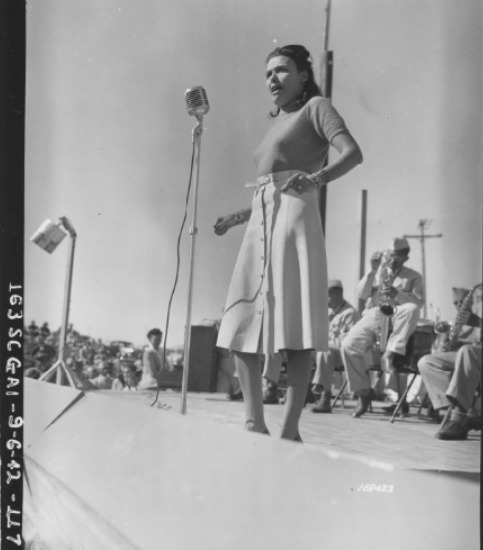
Original caption: “Hot Singer, Lena Horne, Has Audience Jumping With Her Singing at Hollywood Victory Committee Show” Ft. Huachuca, AZ, 9/6/1942, NARA ID 266694436.
Broadway First: Theater Named for LENA HORNE!
First NYC theater named for a Black woman honors legend
By Miriam Kleiman, Public Affairs
Civil Rights activist, singer, actress, and dancer Lena Horne (1917–2010) broke racial barriers and achieved many “firsts” including being the first Black performer hired to sing with a major white band, play the Copacabana nightclub, and sign a Hollywood contract. This week she (posthumously) achieved another milestone when Broadway’s Atkinson Theatre was renamed The Lena Horne Theatre. She features prominently in our records: supporting the troops in World War II, meeting with presidents, and marching on Washington.
Video: Lena Horne Christens the USS George Washington Carver, Richmond, CA, 5/17/1943, NARA ID 77813.

Original caption: "Lena Horne conserves fuel (gas)." WWII, NARA ID 535820.
Lena Horne at the March on Washington 8/28/1963, NARA ID 542057.

Lena Horne with JFK 11/20/1963, JFK Library image.

Lena Horne with IKE 3/19/55, image online.
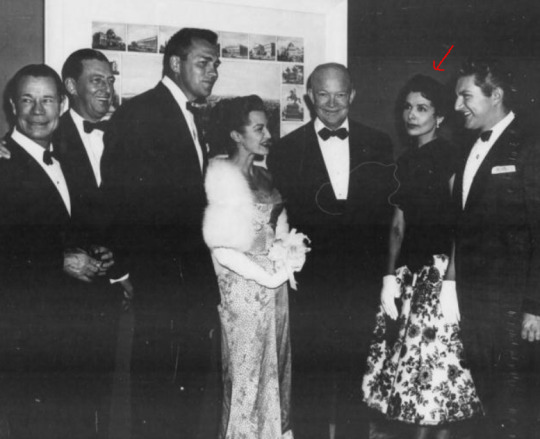
Lena Horne with President Truman at his Inaugural Gala where she sang "Stormy Weather" 1/19/1949. Truman Library 64-1-31. NARA ID 200002.


More online:
Black History special topics page - NARA’s related online resources
1966 Interview - hear Horne discuss her life and career, civil rights, Billie Holiday and Joe Lewis. Preserved by Pacifica Radio Archives with National Historical Publications and Records Commission support.
Celebrating Black History Month: Hidden Gems, AOTUS blog
Statement by President Obama on the Passing of Lena Horne, Obama Library
President Reagan’s remarks for Kennedy Center Honorees, 12/2/1984, Reagan Library
#black history#blm#civil rights#equity#nhprc#jazz#black women#music history#jfk library#eisenhower library#truman library#lena horn#broadway#lena horne theater#broadway history#broadwaynews#lenahornetheater#musical theater#theater news
98 notes
·
View notes
Text
Grateful Dead Among 2024 Kennedy Center Honorees
6 notes
·
View notes
Text

At the Kennedy Center Honors, Heart's Ann and Nancy Wilson, accompanied by Jason Bonham, son of Led Zeppelin's late drummer John Bonham, delivered a breathtaking performance of "Stairway to Heaven." The emotionally charged rendition deeply affected both the audience and the honorees. The Wilson sisters' powerful delivery, enhanced by a full choir and orchestra, elevated the song's grandeur. Led Zeppelin's Robert Plant, Jimmy Page, and John Paul Jones were visibly moved by the tribute, with Plant notably brought to tears. The profound impact of the performance was acknowledged by Led Zeppelin, with Plant praising the depth and emotional resonance brought by Heart's rendition.
Listen here : https://designlina.com/rz85x65q0z
4 notes
·
View notes
Text
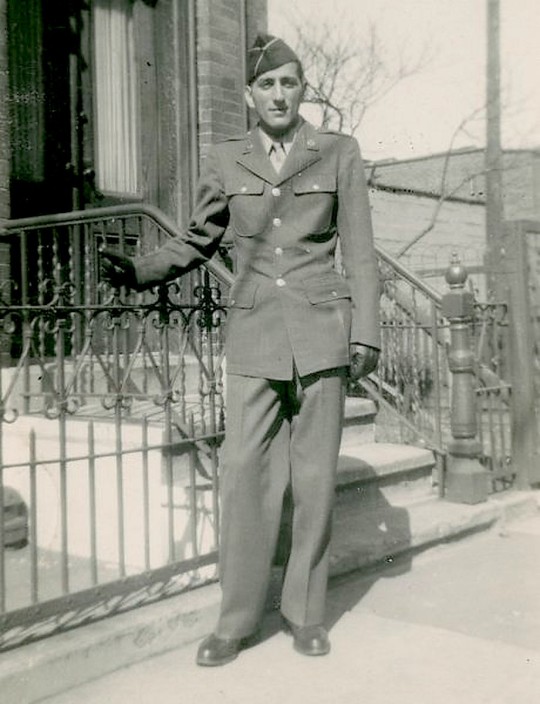
Tony Bennett
Anthony Dominick Benedetto, United States Army
63rd Infantry Division
August 3, 1926 – July 21, 2023
Tony Bennett was an American singer. Bennett amassed many accolades throughout his career, including 20 Grammy Awards, a Lifetime Achievement Award, and two Primetime Emmy Awards. He was named an NEA Jazz Master and a Kennedy Center Honoree, and was the founder of the Frank Sinatra School of the Arts in Astoria, Queens, New York. Bennett sold more than 50 million records worldwide.
Tony Bennett had come a long way since growing up poor in Queens, New York, during the Great Depression. Born Anthony Dominick Benedetto in 1926 to Italian immigrants, Bennett's father was a grocer who died when Tony was 10 years old. It wasn't long before he started helping out the family by singing while waiting tables.
Like many people and many families, the Benedettos' lives were forever changed by World War II.
Bennett turned 18 in 1944 and was drafted into the U.S. Army.
By March 1945, the young soldier was deploying to Europe with the 63rd Infantry Division, replacing casualties lost in the Battle of the Bulge. In his 1998 autobiography "The Good Life," he called the war a "front row seat in hell."
As the German Army was pushed back, Benedetto and his company saw bitter fighting in cold winter conditions, often hunkering down in foxholes as German 88 mm guns fired on them.
At the end of March, they crossed the Rhine and entered Germany, engaging in dangerous house-to-house, town-after-town fighting to clean out German soldiers; during the first week of April, they crossed the Kocher River, and by the end of the month rea ched the Danube.
During his time in combat, Benedetto narrowly escaped death several times. The experience made him a pacifist he would later write, "Anybody who thinks that war is romantic obviously hasn't gone through one,"and later say, "It was a nightmare that's permanent. I just said, 'This is not life. This is not life.'"
At the war's conclusion he was involved in the liberation of the Kaufering concentration camp, a subcamp of Dachau, near Landsberg, where some American prisoners of war from the 63rd Division had also been held. He later wrote in his autobiography that "I saw things no human being should ever have to see."
Benedetto stayed in Germany as part of the occupying force but was assigned to an informal Special Services band unit that would entertain nearby American forces. His dining with a black friend from high school—at a time when the Army was still racially segregated—led to his being demoted and reassigned to Graves Registration Service duties.
Subsequently, he sang with the 314th Army Special Services Band under the stage name Joe Bari (a name he had started using before the war, chosen after the city and province in Italy and as a partial anagram of his family origins in Calabria). He played with many musicians who would have post-war careers.
Upon his discharge from the Army and return to the States in 1946, Benedetto studied at the American Theatre Wing on the GI Bill. He was taught the bel canto singing discipline, which would keep his voice in good shape for his entire career. He continued to perform wherever he could, including while waiting tables. Based upon a suggestion from a teacher at American Theatre Wing, he developed an unusual approach that involved imitating, as he sang, the style and phrasing of other musicians—such as that of Stan Getz's saxophone and Art Tatum's piano—helping him to improvise as he interpreted a song.He made a few recordings as Bari in 1949 for small Leslie Records, but they failed to sell.
12 notes
·
View notes